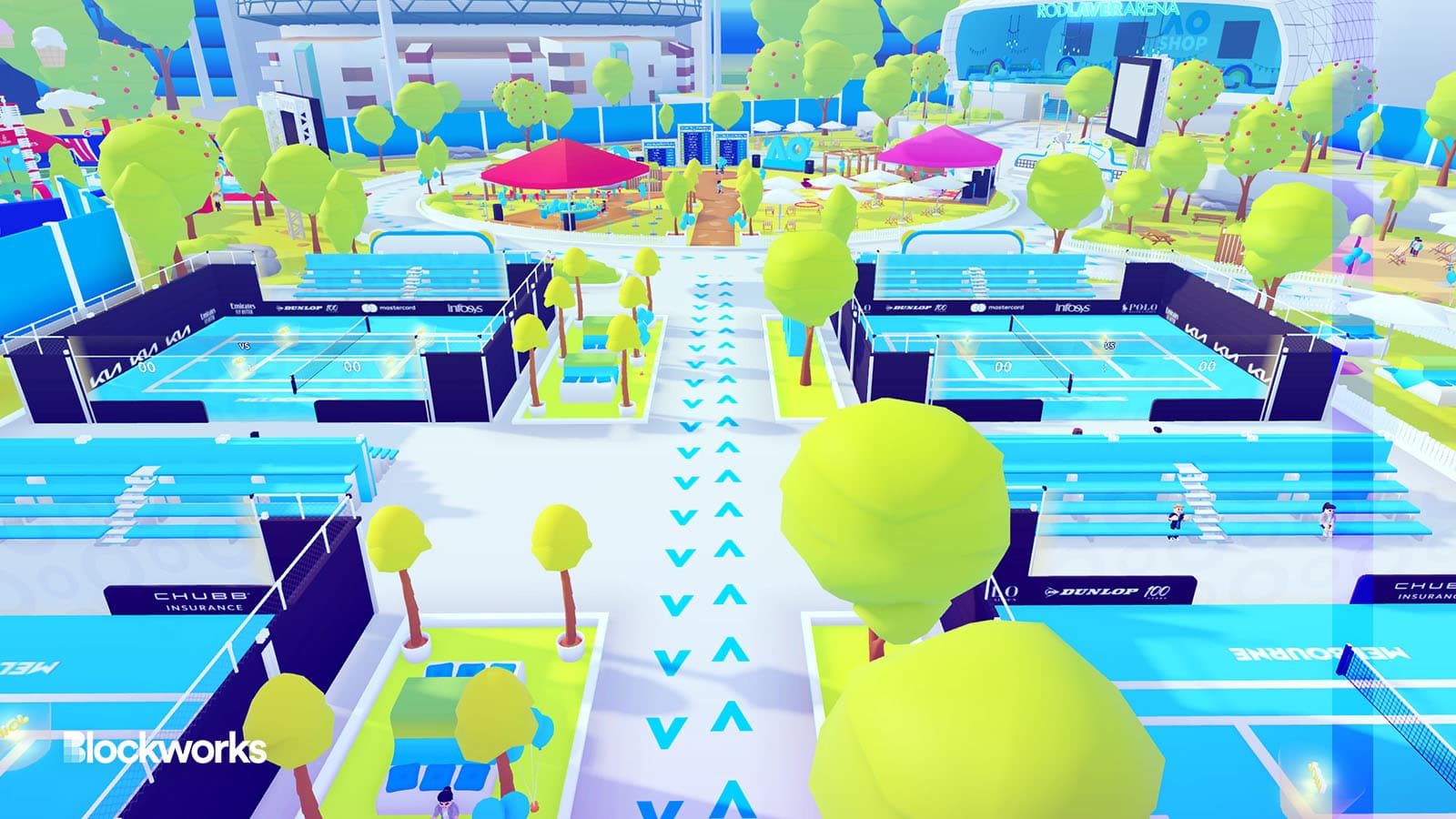Australian Open 2023 Takes Swing at Roblox Metaverse
The tournament, which was last year exclusively hosted on Decentraland’s platform, will be branching out to other non-blockchain-based metaverses

AO drops on Roblox; Source: Australian Open, modified by Blockworks
The Australian Open (AO) has sidestepped the promotion of a previous blockchain metaverse project in favor of this year’s sporting event tied to a non-crypto virtual platform known as Roblox.
Dubbed AO Adventure, the online game allows users to explore the virtual world of the Australian Open Park, modeled after the real-life version in the city of Melbourne.
They’re even throwing in a chance to meet Australian tennis superstar Nick Kyrgios, where users will be greeted by a digital avatar dubbed “humanoid Nick.”
The catch for crypto enthusiasts: Roblox’s platform is notably absent of any blockchain or Web3 connection. Roblox is an online platform allowing users to create their own games for others to participate in.
Last year, the platform took a stance against rumors it would issue its own non-fungible token (NFT) built on a blockchain or that it would push for Web3 development. According to its updated community standards, developers who are not part of a Roblox partnership program are barred from using off-platform services or products to sell on-platform items for money. That would prevent users from engaging with NFTs that would later be sold in online marketplaces.
“To be honest, the Australian Open’s decision to build in Roblox, instead of exclusively in Decentraland, will likely result in a better user experience for their community,” Simon Kertonegoro, CEO of MyMetaverse told Blockworks. “It’s just a shame that Roblox has banned the use of NFTs in their platform.”
Decentraland’s platform was tapped as last year’s medium of choice for the tournament. Designed by Web3 art studio Run It Wild, the platform clocked a peak of 5,000 unique visitors per day — or so Blockworks was told at the time.
Decentraland will continue to co-host the virtual event alongside the more heavily promoted Roblox platform and will run from Jan. 16 through to Jan. 29, local time.
The push for Roblox ahead of other metaverses built around blockchain tech, as seen with the implementation of humanoid Nick, is a conscious decision for a “multiverse play,” a Run It Wild spokesperson told Blockworks.
Serving up fresh ArtBalls
Last year’s Australian Open also featured 6776 collectible NFT “ArtBalls” linked to winning or live shots of a particular match and uploaded to the blockchain. At the time, the balls clocked roughly $3.9 million in trading volume over a bi-weekly period.
Glancing across the sales page at NFT marketplace OpenSea, data show the floor price for last year’s art balls has fallen to around 0.09 ETH ($127). That’s considerably less than the floor price — seen Jan. 13, 2022 — of around 0.3 ETH or $997 at the time.
The hope is that this year’s event can capture some of the fervor surrounding last year’s trading activity with a launch of a further 2454, newly minted, NFT ArtBalls.
But in comparison to last year’s climate, interest in crypto, blockchain and Web3 has dropped considerably, motivating the event’s organizers to hunt for alternatives.
Roblox, which houses some 43 million daily active users, has been eyed as the better fit for this year’s Open due to its ability to attract younger users to the sport. The AO game on Roblox has been live for roughly 9 hours, at the time of writing, with around 2,500 daily unique visitors.
“With more than 80% of users on the platform aged 25-and-under, it’s also a great platform for us to connect with younger fans,” Ridley Plummer, senior manager of Metaverse, NFT’s, Web3 and Cryptocurrency at Tennis Australia said in a statement.
Game on.
Get the news in your inbox. Explore Blockworks newsletters:
- The Breakdown: Decoding crypto and the markets. Daily.
- 0xResearch: Alpha in your inbox. Think like an analyst.






